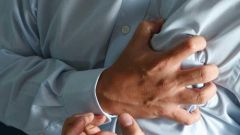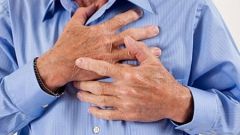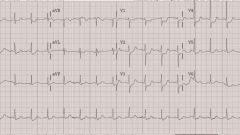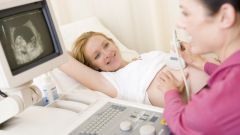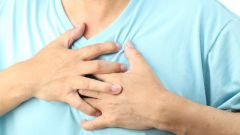Cardiomegaly distinguish primary and secondary. The secondary increase of the heart can develop as a result of other illnesses: infectious diseases of the heart and other organs and systems, severe toxic lesions, respiratory failure. The exact cause of primary cardiomegaly of exam not fully known.
Enlarged heart usually found incidentally — during routine medical examination, the results of radiography of the chest. On x-ray are clearly visible above the size of the heart shadow. Also small changes can be detected on the electrocardiogram and auscultation of the heart. Mandatory study is Echocardiography.
Typically, when cardiomegaly is detected during the examination, appointed because of the deteriorating condition of the child, it is an unfavorable prognostic sign. Usually in this case the disease is rapid and severe, often ends in death.
The symptoms that you should pay attention to:
— heart palpitations;
— shortness of breath;
— pallor of the skin;
— cyanosis of the lips and nose;
— swelling;
— lack of appetite.
Child's heart beats itself more often than adults, therefore to judge how frequent palpitations or not a specialist is difficult. But the frequency of heart beats above 160 — it's definitely an alarming sign. Breathing cardiomegaly not only quickens, but also disrupted his rhythm. The child breathes often superficial and sometimes as "miss" breaths.
Pallor of the skin develops because of impaired circulation due to a lack of heart. If these violations are not remedied, the paleness increases, and appears cyanosis — bluish color of the skin of nasolabial triangle.
Swelling indicate a fairly severe circulatory disorders when the child's heart is not doing its job and the fluid begins to "sweat" out of the bloodstream into the tissues.
Lack of appetite is the most common symptom of most diseases, often the first. And, unfortunately, many mothers do not pay due attention.
So, the child revealed an enlarged heart. What should I do?
First of all, do not panic. By itself, an enlarged heart on radiographs does not mean anything. The child needs to spend the minimum necessary surveys. After all the laboratory and instrumental researches of the baby will be directed to consult a pediatric cardiologist who on the basis of the child's status and data of all surveys will be able to put the correct diagnosis and select appropriate treatment. To delay the consultation of a specialist is not necessary, after all, treatment is most effective when not deployed the clinical picture of the disease. This means that the heart is to cope with their work, and it can be restored. With the appearance of visible symptoms to delay the more impossible.
So do not neglect routine medical examinations and surveys. Don't forget that in some cases they can save a little life.
Enlarged heart usually found incidentally — during routine medical examination, the results of radiography of the chest. On x-ray are clearly visible above the size of the heart shadow. Also small changes can be detected on the electrocardiogram and auscultation of the heart. Mandatory study is Echocardiography.
Typically, when cardiomegaly is detected during the examination, appointed because of the deteriorating condition of the child, it is an unfavorable prognostic sign. Usually in this case the disease is rapid and severe, often ends in death.
The symptoms that you should pay attention to:
— heart palpitations;
— shortness of breath;
— pallor of the skin;
— cyanosis of the lips and nose;
— swelling;
— lack of appetite.
Child's heart beats itself more often than adults, therefore to judge how frequent palpitations or not a specialist is difficult. But the frequency of heart beats above 160 — it's definitely an alarming sign. Breathing cardiomegaly not only quickens, but also disrupted his rhythm. The child breathes often superficial and sometimes as "miss" breaths.
Pallor of the skin develops because of impaired circulation due to a lack of heart. If these violations are not remedied, the paleness increases, and appears cyanosis — bluish color of the skin of nasolabial triangle.
Swelling indicate a fairly severe circulatory disorders when the child's heart is not doing its job and the fluid begins to "sweat" out of the bloodstream into the tissues.
Lack of appetite is the most common symptom of most diseases, often the first. And, unfortunately, many mothers do not pay due attention.
So, the child revealed an enlarged heart. What should I do?
First of all, do not panic. By itself, an enlarged heart on radiographs does not mean anything. The child needs to spend the minimum necessary surveys. After all the laboratory and instrumental researches of the baby will be directed to consult a pediatric cardiologist who on the basis of the child's status and data of all surveys will be able to put the correct diagnosis and select appropriate treatment. To delay the consultation of a specialist is not necessary, after all, treatment is most effective when not deployed the clinical picture of the disease. This means that the heart is to cope with their work, and it can be restored. With the appearance of visible symptoms to delay the more impossible.
So do not neglect routine medical examinations and surveys. Don't forget that in some cases they can save a little life.



